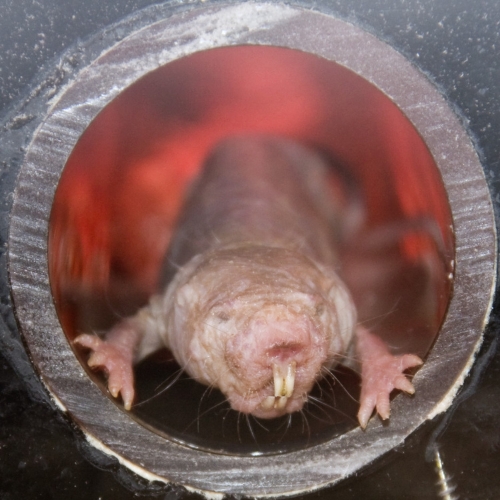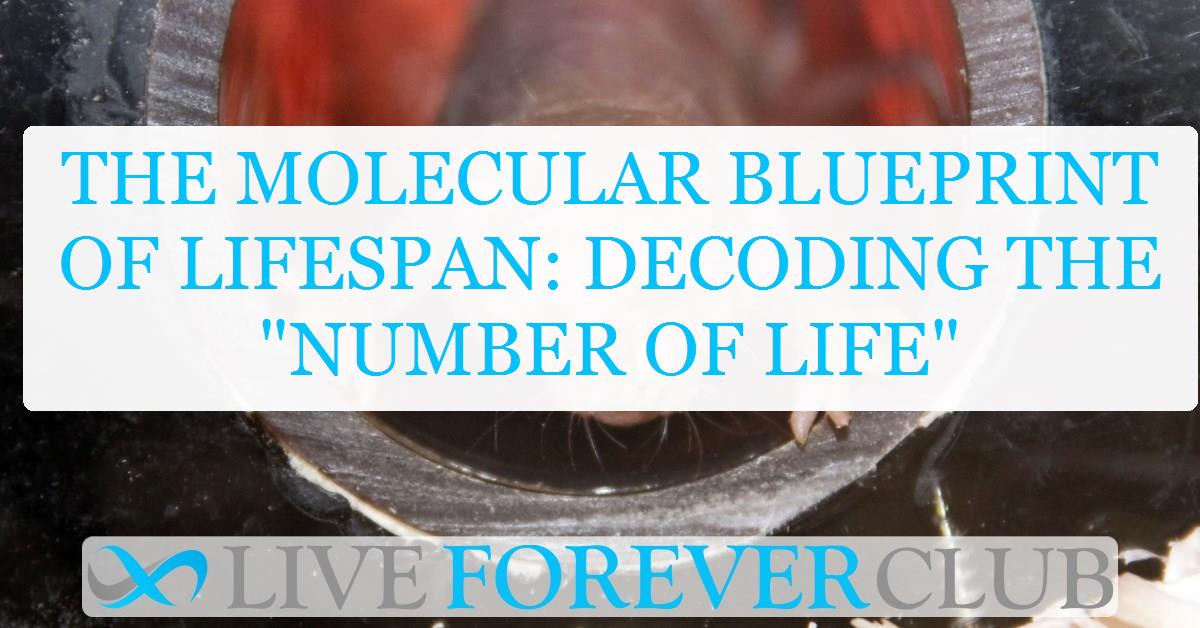How long we live has captivated human thought for centuries. From ancient tales of immortality to modern anti-ageing research, the quest for understanding life's boundaries continues. Recent groundbreaking research reveals a fascinating connection between physiological traits and lifespan through the concept of a "Number of Life."
This idea, rooted in molecular and systemic biology, suggests that ageing and lifespan might be governed by universal constants. Let’s delve into the science behind this theory and explore its transformative implications.
Lifespan Through the Lens of Constants
At the heart of the study lies the discovery of near-invariant numbers that define lifespan across species. One such constant is the total number of respiration cycles in an organism's life. For mammals, this number hovers around **4.5 billion respiration cycles**—a limit that remains remarkably consistent, regardless of the species’ size, metabolic rate, or life history.
This "Number of Life" offers a unifying perspective on how organisms expend energy over time. By integrating this constant with other physiological metrics like heart rate, metabolic rate, and body mass, researchers propose a fundamental framework to predict lifespan.
But this is only part of the story. Another invariant emerges at the molecular level: the somatic mutation burden. Studies show that the accumulation of somatic DNA mutations remains relatively stable by the end of an organism's life, regardless of lifespan or size differences among species. This suggests that molecular and systemic processes operate in tandem to dictate longevity.
Physiological Traits and Their Lifespan Connection
The study identifies several physiological traits that correlate strongly with lifespan. These include:
1. Metabolic Rate
Metabolic rate reflects the energy expenditure of an organism. Larger animals, with slower metabolisms, tend to live longer, while smaller animals, with higher metabolic rates, have shorter lifespans. The consistency of respiration cycles across species reinforces the idea that lifespan is tied to cumulative energy expenditure.
2. Heart Rate
Heart rate shows an inverse relationship with lifespan. Mammals with slower heart rates (e.g., elephants) live significantly longer than those with faster heart rates (e.g., mice). This relationship aligns with the observation that total heartbeats over a lifetime remain relatively constant across species.
3. Respiration Frequency
Respiration cycles, a proxy for energy consumption, provide a universal measure of biological ageing. Even in species without hearts, such as certain reptiles and fish, respiration frequency scales proportionally with lifespan, reinforcing its role as a cornerstone of longevity.
4. Body Mass
Larger animals generally live longer, partly due to their slower metabolic and heart rates. This finding aligns with the concept that lifespan scales with energy utilisation over time.
5. Reproductive Traits
Lifespan correlates with sexual maturity and reproductive patterns. Species with longer lifespans tend to mature later and produce fewer offspring, balancing energy allocation between survival and reproduction.
The Molecular Dimension: Somatic Mutations
While physiological traits operate at the systemic level, somatic mutations occur at the molecular level. These mutations, accumulated in DNA over time, result from endogenous processes (e.g., replication errors) and external factors (e.g., environmental stressors). As somatic mutations accumulate, they impair cellular functions, contributing to ageing and age-related diseases.
Remarkably, research reveals that the end-of-lifespan mutation burden remains consistent across species. Despite vast differences in body size and lifespan—ranging from mice to whales—the total number of mutations at life's end varies by only a factor of 2–3. This suggests a molecular "ceiling" that defines the limits of cellular resilience.
The study draws a compelling parallel between somatic mutations and respiration cycles. Both act as invariant markers of lifespan, hinting at an underlying connection between molecular and systemic processes.
Unraveling the Causal Connection
To establish a causal link between lifespan and traits, researchers used modeling and data to show that lifespan depends on total respiration cycles divided by respiration frequency, connecting physiological processes like metabolic rate, heart rate, and body mass to lifespan limits.
Additionally, the study highlights a potential link between respiration frequency and somatic mutation rate. The production of reactive oxygen species (ROS)—a byproduct of respiration—may drive mutations, creating a feedback loop that integrates molecular damage with systemic energy expenditure.
Universal Lifespan Metrics Across Species
The concept of the "Number of Life" extends beyond mammals. For example:
Galápagos Tortoise: With a lifespan of ~177 years and a respiration rate of three breaths per minute, the total respiration cycles closely match those of mammals.
Birds: Despite having higher heart rates than mammals, birds exhibit a similar total number of respiration cycles, adjusted for their unique physiology.
Fish: Certain fish species, with lower heart rates and unique respiratory mechanisms, also align with the invariant number of respiration cycles.
These findings suggest that respiration cycles serve as a universal metric for lifespan across diverse taxa.
Outliers and Adaptations
Not all species fit neatly into this framework. The mole rat, for instance, defies many conventional ageing models. Known for its remarkable longevity and resistance to ageing-related diseases, the mole rat exhibits an unusual respiratory and metabolic profile. While it aligns with the invariant somatic mutation burden, its respiration cycles significantly exceed the predicted number.
This anomaly highlights the role of adaptive mechanisms. Mole rats possess unique metabolic pathways, such as burning fructose under low-oxygen conditions, which may mitigate the oxidative stress associated with respiration. These adaptations offer valuable insights into extending lifespan and resisting ageing.
Theories of Ageing: A Unifying Perspective
The findings of this study bridge multiple ageing theories:
1. Somatic Mutation Theory
Accumulated DNA mutations cause cellular decline and ageing. The consistent mutation burden across species underscores this theory's relevance.
2. Free Radical Theory
Oxidative stress from respiration byproducts damages cellular components. The correlation between respiration cycles and mutation rates supports this hypothesis.
3. Rate of Living Theory
Lifespan scales with energy expenditure. The invariant number of respiration cycles reinforces this energy-based framework.
By integrating these theories, the study proposes a unified model of ageing that spans molecular and systemic levels.
Implications for Science and Society
The concept of a "Number of Life" carries profound implications:
Biological Research
Understanding lifespan constants can guide comparative studies across species, shedding light on evolutionary adaptations.
Healthcare and Medicine
Insights into molecular and systemic ageing mechanisms may inspire therapies targeting oxidative stress, DNA repair, and metabolic regulation.
Longevity Interventions
By modulating respiration frequency or mitigating mutation accumulation, researchers could develop strategies to extend healthy lifespan.
A Natural Timescale for Life
The existence of lifespan constants suggests a natural timescale for life. In terms of respiration cycles, lifespan variations across species reduce to a factor of two—a remarkable compression of biological diversity into a single, unifying measure.
This natural timescale reflects a fundamental principle of physics: systems evolve over characteristic timescales defined by their intrinsic properties. Just as galaxies form over a few orbital periods, organisms live for a finite number of biological "ticks."
The Path Forward
The study invites further exploration into the links between molecular and systemic processes. Key questions include:
- What mechanisms govern the production of ROS and their impact on mutation rates?
- How do species-specific adaptations, like those of the mole rat, alter lifespan constants?
- Can interventions targeting respiration or DNA repair extend lifespan without compromising health?
Addressing these questions could unlock new frontiers in ageing research and biomedicine.
In conclusion, the "Number of Life" offers a compelling framework for understanding lifespan. By revealing invariant numbers that govern ageing, this research bridges the gap between molecular biology and systemic physiology. It challenges us to rethink longevity as a product of fundamental biological laws rather than chance.
As we decode the blueprint of life, we move closer to answering humanity's age-old question: How can we live longer and healthier lives? With the "Number of Life" as our guide, the future of ageing research looks brighter than ever.
The study is published in the journal Scientific Reports. It was led by Andrés Escala from Universidad de Chile.






